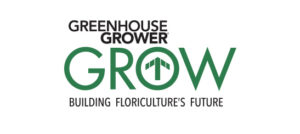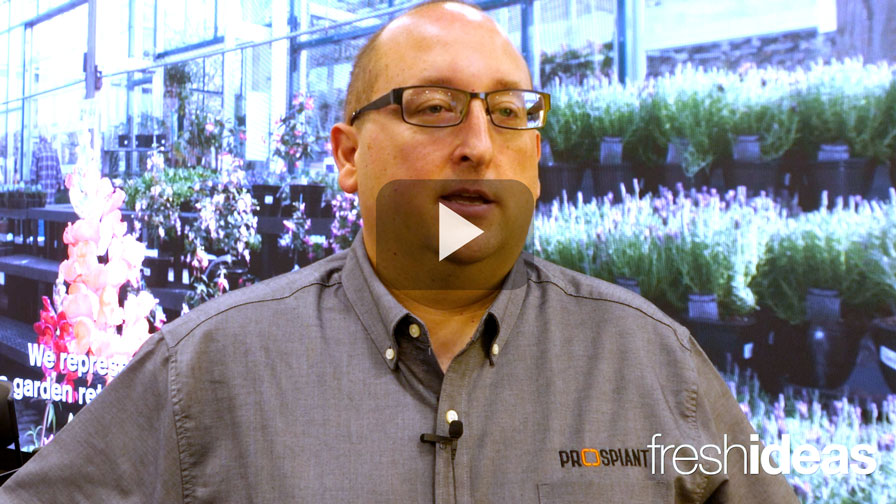Greenhouse Energy Use: How You Can Take Control
As the greenhouse industry is pushed to reduce costs of production, energy use represents a major expenditure, and potential opportunity to increase production efficiency, measured as biomass (or saleable items) produced per unit of energy input. Investing in energy-efficient lighting fixtures and equipment are among many options available to growers to improve their profitability. However, it is difficult to know how much of an impact such investments might have, particularly if the baseline production efficiency of the greenhouse operation is unknown.
To help answer these kinds of questions, other agricultural industries such as poultry and dairy have developed benchmarking tools that help users track their energy usage, and more importantly, compare themselves to their peers and industrywide averages. Like the EnergyGuide label on appliances, energy benchmarking reports can let a grower know how their system compares to others, which in turn can help guide them in decision making with regard to energy efficiency improvements. Here we propose an energy benchmark database for greenhouses.
What Are the Benefits?
Besides the obvious benefit of being able to directly compare energy usage to the average energy use of peer greenhouses, benchmarking can also allow a greenhouse operation to examine how its own performance changes year to year. Annual reports based on information collected from participating growers will give an industrywide snapshot of overall energy efficiency trends, while also providing the ability to see how new technologies adopted by some greenhouses may benefit others and the entire industry.
Beyond simply providing comparisons, action-oriented benchmarking can immediately provide a user with recommendations as to how adopting specific energy-efficient practices could improve energy use efficiency and increase profitability, as well as providing an estimated simple payback period for recommended improvements.
 Outside of the individual greenhouse user, utility companies could use the anonymized information collected, allowing them to better understand greenhouse-load patterns and industry standard practices. This information can be used to help utilities understand the load requirements of new builds or expansions. The information could also help utilities develop minimum efficiency standards and targeted incentives for growers to adopt technologies and practices that reward them for their production efficiency.
Outside of the individual greenhouse user, utility companies could use the anonymized information collected, allowing them to better understand greenhouse-load patterns and industry standard practices. This information can be used to help utilities understand the load requirements of new builds or expansions. The information could also help utilities develop minimum efficiency standards and targeted incentives for growers to adopt technologies and practices that reward them for their production efficiency.
Local, state, and federal government programs can better understand industry trends, which in turn puts them in a more informed position when they are developing and targeting programs to benefit the greenhouse industry. Government agencies at all levels are tackling ambitious goals to reduce emissions and improve environmental outcomes of all sectors. Energy benchmark information for the greenhouse sector will help to develop informed baselines from which to establish policy targets and design environmental credit trading platforms to further reward efficient growers.
What Are the Challenges?
There are several challenges in developing a useful benchmarking tool for the greenhouse industry. For comparisons to be valid and meaningful, it is essential that there is consistency in how energy use is measured and reported. Ideally, this information would be collected through energy auditing firms trained in agricultural energy data collection.
The greenhouse industry is a highly diverse mixture of crops produced, facility size, technology employed, and seasonal differences in production, which can make comparisons to industry average values less useful. To address this challenge, it is important that the participating greenhouses are sorted into peer groups in which valid comparisons can be made. However, to maintain anonymity, it is imperative that the benchmarking tool carefully balance segmenting the industry so as to provide accurate baseline comparisons and yet not inadvertently reveal individual user data.
The Greenhouse Lighting and Systems Engineering (GLASE) consortium in partnership with EnSave is working toward developing a New York State Greenhouse Database focusing on energy usage benchmarking and opportunity analysis. It is hoped that a useful benchmarking tool provided to the growers, utility companies, and governments in New York State will grow to national proportions to strengthen the U.S. greenhouse industry.
The GLASE consortium is a public-private partnership formed between Cornell University, the Center for Lighting Enabled Systems and Application (LESA) at Rensselaer Polytechnic Institute, and our industry members. Sponsored by the New York State Energy and Research Development Authority (NYSERDA), GLASE is working with CEA growers and technology manufacturers to improve the efficiency of horticultural lighting systems and reduce the carbon footprint of greenhouses and indoor farms.










